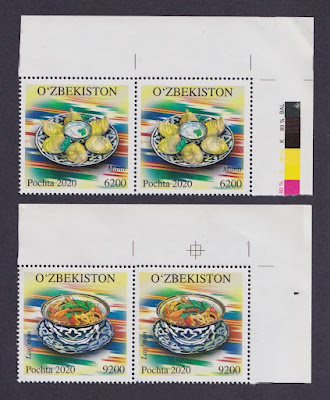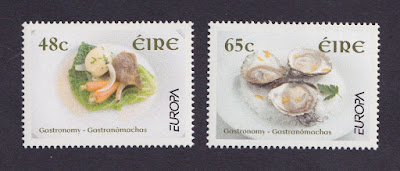Technical Details:
Issue Date: 22 September 2023
About Gastronomy - Spain in 19 Dishes, Castilla la Mancha, Toledo-style Partridge
Correos, through its series Gastronomy Spain in 19 dishes, continues to explore gastronomy, showing a dish from each region. This time it is Castilla-La Mancha's turn, which has chosen Perdiz a la Toledo.
So that we can all taste this dish, the Palio restaurant (Ocaña, Toledo) offers us the recipe.
Elaboration process:
Clean the partridge and empty it of viscera. Introduce a peeled garlic and a bay leaf into its body. Season and bridle with twine thread. Dredge in flour and place in a saucepan with extra virgin olive oil. Reserve the partridge.
In that oil, add 2 onions cut into fine julienne strips, half a clove of garlic, a few balls of pepper and rosemary and thyme. Sauté until the onions take color.
Arrange the partridge on that bottom with the breast side down and moisten it with the white wine. Reduce a little and cover with water. Bring to a boil and lower the heat. Cover and cook over low heat until the legs are tender; approximately an hour and a half. Adjust salt.
About Gastronomy - Spain in 19 Dishes, Castilla la Mancha, Toledo-style Partridge
Correos, through its series Gastronomy Spain in 19 dishes, continues to explore gastronomy, showing a dish from each region. This time it is Castilla-La Mancha's turn, which has chosen Perdiz a la Toledo.
So that we can all taste this dish, the Palio restaurant (Ocaña, Toledo) offers us the recipe.
Elaboration process:
Clean the partridge and empty it of viscera. Introduce a peeled garlic and a bay leaf into its body. Season and bridle with twine thread. Dredge in flour and place in a saucepan with extra virgin olive oil. Reserve the partridge.
In that oil, add 2 onions cut into fine julienne strips, half a clove of garlic, a few balls of pepper and rosemary and thyme. Sauté until the onions take color.
Arrange the partridge on that bottom with the breast side down and moisten it with the white wine. Reduce a little and cover with water. Bring to a boil and lower the heat. Cover and cook over low heat until the legs are tender; approximately an hour and a half. Adjust salt.




































